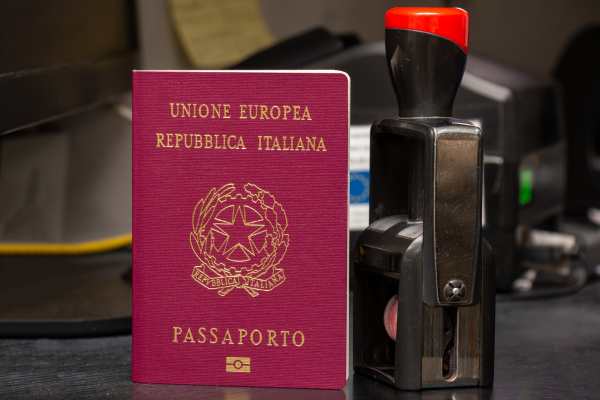Italy, with its rich history and vibrant culture, has always been a beacon for those looking to connect with their roots or explore new cultural horizons. For many, obtaining Italian citizenship is not just a legal process but a journey of embracing a heritage that is deeply intertwined with tradition, art, and, most notably, cuisine. In this article, we delve into the essence of Italian citizenship and how embracing both cultural and culinary heritage can enrich one’s life.
The Journey to Italian Citizenship
Understanding Italian Citizenship
Italian citizenship can be acquired in several ways, primarily through jus sanguinis (right of blood), marriage, or naturalization. The most common path for those of Italian descent is through jus sanguinis, where individuals can claim citizenship if they can prove lineage to an Italian ancestor.
The Process of Obtaining Citizenship
The process involves meticulous documentation, including birth, marriage, and death certificates, which must be authenticated and translated. While the journey can be complex and time-consuming, the rewards of reconnecting with one’s heritage make it worthwhile.
Cultural Heritage: A Deep Connection
Historical Significance
Italy’s rich history, from the Roman Empire to the Renaissance, has left an indelible mark on world culture. Embracing Italian citizenship means stepping into a lineage of incredible historical significance and cultural contributions that have shaped the modern world.
Art and Architecture
Italy is synonymous with art and architecture. Cities like Rome, Florence, and Venice are living museums, housing works of art and architectural marvels that date back centuries. The pride of Italian citizenship is intertwined with the nation’s artistic legacy, inspiring citizens to preserve and celebrate these cultural treasures.
Embracing the Culinary Heritage
The Heart of Italian Cuisine
Italian cuisine is renowned worldwide for its emphasis on fresh ingredients, simple preparation, and profound flavors. The culinary heritage of Italy is not just about food; it’s about community, family, and tradition.
Regional Specialties
Italy’s culinary landscape is incredibly diverse, with each region offering its own unique specialties. From the rich, hearty dishes of the north to the light, Mediterranean flavors of the south, the regional diversity in cuisine reflects the varied geography and cultural influences of the country.
Northern Italy: Rich and Hearty
In northern Italy, dishes like Risotto alla Milanese and Ossobuco showcase the region’s penchant for rich, creamy textures and robust flavors. These dishes are often enjoyed during colder months, providing warmth and comfort.
Central Italy: Rustic and Earthy
Central Italy, particularly Tuscany, is known for its rustic, earthy cuisine. Ribollita, a hearty soup made with bread and vegetables, and Pappardelle al Cinghiale, wide pasta noodles with wild boar ragu, are staples that highlight the region’s love for robust, natural flavors.
Southern Italy: Light and Vibrant
The cuisine of southern Italy is characterized by light, vibrant flavors, often featuring fresh vegetables, olive oil, and seafood. Dishes like Caprese Salad and Pasta alla Norma exemplify the Mediterranean influence and the emphasis on fresh, local ingredients.
The Social Fabric of Food
Family and Community
In Italy, meals are a social event. Families gather around the table to share not just food, but stories, laughter, and love. This tradition fosters a strong sense of community and belonging, making the act of eating a deeply communal experience.
Celebratory Feasts
Italian cuisine is also at the heart of celebrations and festivals. From Christmas and Easter feasts to local food festivals, these events are occasions for communities to come together and celebrate their shared heritage.
Preserving and Passing Down Traditions
Cooking as an Art Form
For many Italians, cooking is an art form that is passed down through generations. Recipes are shared, refined, and preserved, ensuring that the culinary heritage remains vibrant and alive. Embracing Italian citizenship often means learning and continuing these culinary traditions.
Education and Outreach
Programs and initiatives that focus on teaching Italian cooking and cultural traditions help to preserve the heritage. Schools, community centers, and online platforms offer classes and resources to help individuals connect with their Italian roots.
The Global Influence of Italian Cuisine
Italian Cuisine Worldwide
Italian cuisine has a significant global presence, with Italian restaurants and dishes enjoyed by millions around the world. The universal appeal of Italian food lies in its simplicity, quality, and the joy it brings to those who partake in it.
Adaptation and Innovation
While traditional recipes remain cherished, Italian cuisine continues to evolve. Chefs around the world experiment with Italian ingredients and techniques, creating innovative dishes that honor the heritage while embracing contemporary culinary trends.
The Personal Journey of Embracing Heritage
Connecting with Ancestry
For many, obtaining Italian citizenship is a deeply personal journey of connecting with one’s ancestry. It provides a sense of identity and belonging, bridging the past and present.
Culinary Exploration
Exploring Italian cuisine is a delightful way to connect with heritage. Whether it’s learning to make homemade pasta, discovering regional specialties, or simply enjoying a traditional meal, food serves as a tangible link to cultural roots.
Creating New Traditions
Embracing Italian citizenship and heritage also means creating new traditions. Combining Italian culinary practices with contemporary lifestyles allows for a dynamic and evolving cultural experience that can be passed down to future generations.
Conclusion
The essence of Italian citizenship is found in the rich tapestry of cultural and culinary heritage that defines the nation. From the historical significance and artistic legacy to the communal joy of sharing a meal, embracing this heritage enriches lives and fosters a deep connection to one’s roots. Whether through savoring traditional dishes or participating in cultural celebrations, the journey of embracing Italian citizenship is a celebration of life, community, and the timeless joy of Italian culture. Buon appetito!



